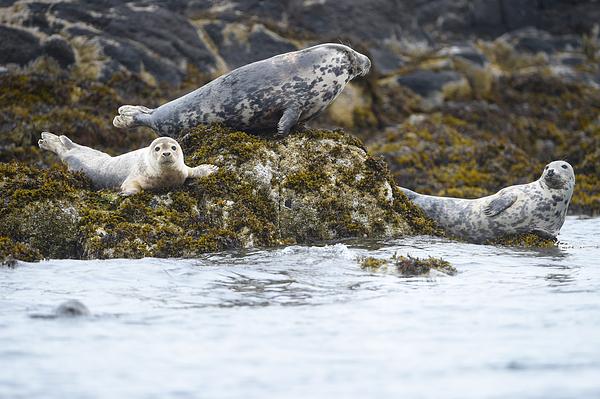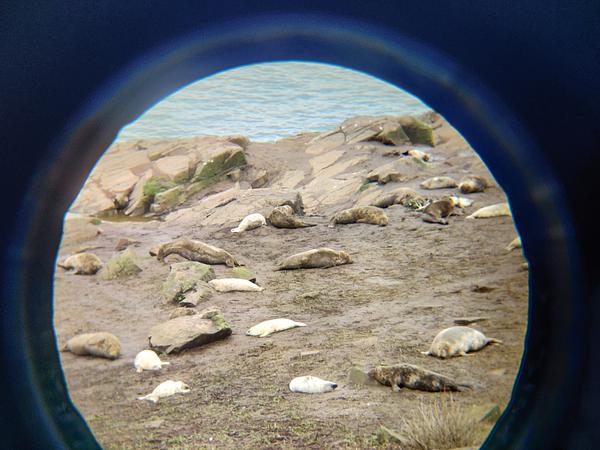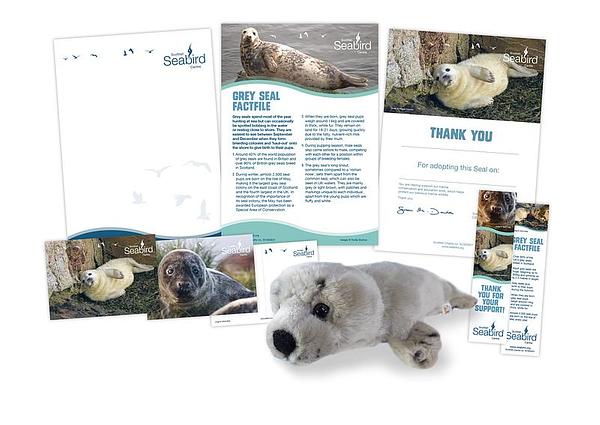.jpg)
The Disturbing Truth: How Human Disturbance Impacts Seals
By Emma Marriott, Conservation Assistant
Seals are fascinating. Centuries of Scottish folklore have enswathed them in mysticism, and their endearing faces and large eyes bewitch anybody who wanders near. It’s easy to be drawn in, perhaps in the hopes of snapping some photos or simply to be near to such enamouring animals which, at a moment’s notice, can slip so silently into another world beneath the waves. Before we know it, we’re far closer than we should be. But what exactly is “too close”, and why is it an issue?

Seals are sensitive
Seals spend up to a third of their lives at sea, but in order to breed, moult, socialise, rest and have their pups they regularly heave themselves onto land–sometimes in their thousands. These areas are called “haul-out sites”, and there are 149 of them officially recognised in Scotland.

Seals are particularly sensitive to disturbance when hauled out. The distance at which they display signs of disturbance will differ depending on location, the time of year (mothers with pups will be distinctly wary), how you approach them and how accustomed they already are to human presence. However, there will always be a line that the seals are not comfortable for you to cross. Whether the intrusion is from the land, sea or air makes little difference.
Once a seal sees you and decides that you’re too close, it’s likely to make a quick getaway into the sea, where it feels safest. This can spook surrounding seals that may not have even noticed the disturbance, leading to a “stampede” that might total every individual at the haul-out site.

What’s the issue?
Disturbance at seal haul-outs is serious. Scaring one seal into the sea might seem like a small issue, especially if it was by accident, but what if that seal has already been frightened off five times that day by different people? The consequences quickly scale up…
- Disturbance uses up precious energy – if a seal is on land, it’s usually resting and preserving its energy. Not only does disturbance interrupt this rest, but seals that feel forced to retreat into the water are wasting a lot of energy in the process. Moving over land is difficult for a seal, not to mention exhausting!

- It disrupts vital processes. Seals need energy all the more whilst moulting, when blood is diverted to the outer skin and peripheries so that the hair cells have a sufficient supply of nutrients to create new fur. This blood supply is cut off if they are forced back into the water prematurely, meaning the process is postponed and must restart when they are next on land. Not only is this energetically taxing, they also lose heat at a far greater rate if in the water during this important time, making them vulnerable to hypothermia.
- It causes stress. Apart from the obvious stress of feeling threatened, young pups may be separated from their mothers. When their mothers are out foraging, the pups are left alone. If a frightened pup flees from people, leaving the place where its mother left it, they might fail to find each other upon the mother’s return. This can lead to…
- Reductions in pup rearing success & pup survival. Young pups that have been separated from their mothers are unlikely to survive, and stampedes by adults can crush young pups on their mad rush into the sea. Disturbance may also reduce the time that pups spend nursing, impacting their fitness. This might mean that they can’t grow and build up their strength quickly enough to survive autumn and winter storms.
Over time, entire seal populations might abandon an area if the disturbance is serious enough.
_Emily_Burton_resized.jpg)
How close is comfortable?
Unless you’re Dr. Dolittle, it’s just not possible to know what a seal is thinking… or is it? Actually, understanding if a seal feels comfortable or not in your presence is pretty simple. You just need to know the signs.
Seals display obvious changes in their behaviour in response to perceived threats. Look out for these 3 stages:
- The seal raises its head and watches you. If you see this, back away.
- The seal will begin to move and squirm. It might shift from its side onto its stomach, preparing to escape. If this happens, back off immediately. Otherwise, you could cause…
- Stampedes. The seal, or many of them, rush into the water from the land. If this happens, you have caused a disturbance.
_Emma_Marriott.png)
The law
According to the Marine (Scotland) Act 2010, it is an offence to “intentionally, or recklessly harass a seal at a designated haul out site”. But what does this mean? Well, there are no firm definitions of what constitutes an offence, but examples might include:
- Intentional harassment: performing disruptive actions that someone knows—and hopes—will cause disturbance.
- Reckless harassment: when someone is aware of the disturbance that their activity may cause, but they go ahead with it anyway.
It could be classed as harassment if you are approaching a designated haul-out site too closely from the sea (especially if you are using a kayak, jet ski or speed boat), from the land (including “sneaking up”), from the sky (flying drones below 1000 feet), or if you are involved in any other activity that results in the stampede of a significant proportion of seals into the sea.
Watching Seals Responsibly
So is that it, then? Should we just stay away from seals completely?
Of course not! People need to see nature to appreciate it and all the benefits that nature-watching brings, but we need to be respectful in how we do it.
- Firstly, research the site you’re visiting before you go so that you’re aware of any local guidance from the rangers. If it’s pupping season, check that the sites you’re visiting aren’t breeding sites, and avoid visiting if they are.

- As a rule of thumb, stick to the RSPCA's recommendation and do not approach seals any closer than 100 metres. You can appreciate them from afar just as enjoyably with a pair of binoculars or a strong camera lens!
- Remember to let the seals choose how close is comfortable. Monitor and be responsive to their behaviour. Are they alert, watching you with their heads raised? Are they acting restless? Back away immediately or they could become aggressive to each other or stampede.
_Jamie.jpg)
- Try not to creep up on them. When they inevitably notice you, they’re likely to take fright. However, this doesn’t mean you should make loud noises to identify your presence–you’ll only startle them.
- If you’re near enough to touch or feed them, you’re way too close! Seals can move fast and you’re at risk of being bitten. If you do find yourself too close and have to back away, make sure you don’t block the seal’s escape route into the sea so that it doesn’t feel trapped.
- If you’re passing on a boat, move slowly and considerately. It might surprise you to know that seals are especially sensitive to kayakers, so maintain a significant distance and increase that distance according to the animals’ behaviour.
- As for aircraft (including drones), try to stay at least 1000 feet above the colony.
_Maggie_Sheddan_(4).jpg)
And finally, remember: lone pups don’t necessarily need rescuing. Their mothers may only be foraging, so give them space. Your dog might be inquisitive, so keep it on a lead–some temptations are too good to be ignored, even for the most compliant of canines!
Still uncertain?
It’s good to get familiar with the Scottish Marine Wildlife Watching Code and Guide to Best Practice for Watching Marine Wildlife. Human disturbance doesn’t only affect seals, it impacts a range of other marine animals, so it’s important that we know how to share these habitats safely and with consideration for the creatures that live in them.
Keen to find out more?
Check out the first two instalments of this 3-part series on seals in Scotland: Spotting the Difference: Seal Species in Scotland and Safeguarding Seals: Threats & Conservation. You could also check out the Grey seal and Harbour (Common) seal profiles on our Wildlife Page.
Seal Pup Rescue
Spotting seal pups on our beaches is not unusual. It is normal for a seal to spend time onshore and seal pups will often be left by their mother whilst she feeds. Seal pups face many challenges including rough weather and predators and while they will usually just be resting and regaining their strength there are some occasions when they may need help.We've created an easy to use checklist to help you decide if a pup is in need of rescue. You can download it HERE.

To keep up to date with what’s happening at the Scottish Seabird Centre throughout the year, follow us on Facebook or Twitter.

My role as Conservation Assistant has been funded by The National Lottery Heritage Fund via the New to Nature programme - an exciting initiative that is helping to support people from diverse backgrounds into environmental roles. To find out more, visit: www.groundwork.org.uk/new-to-nature-apply
